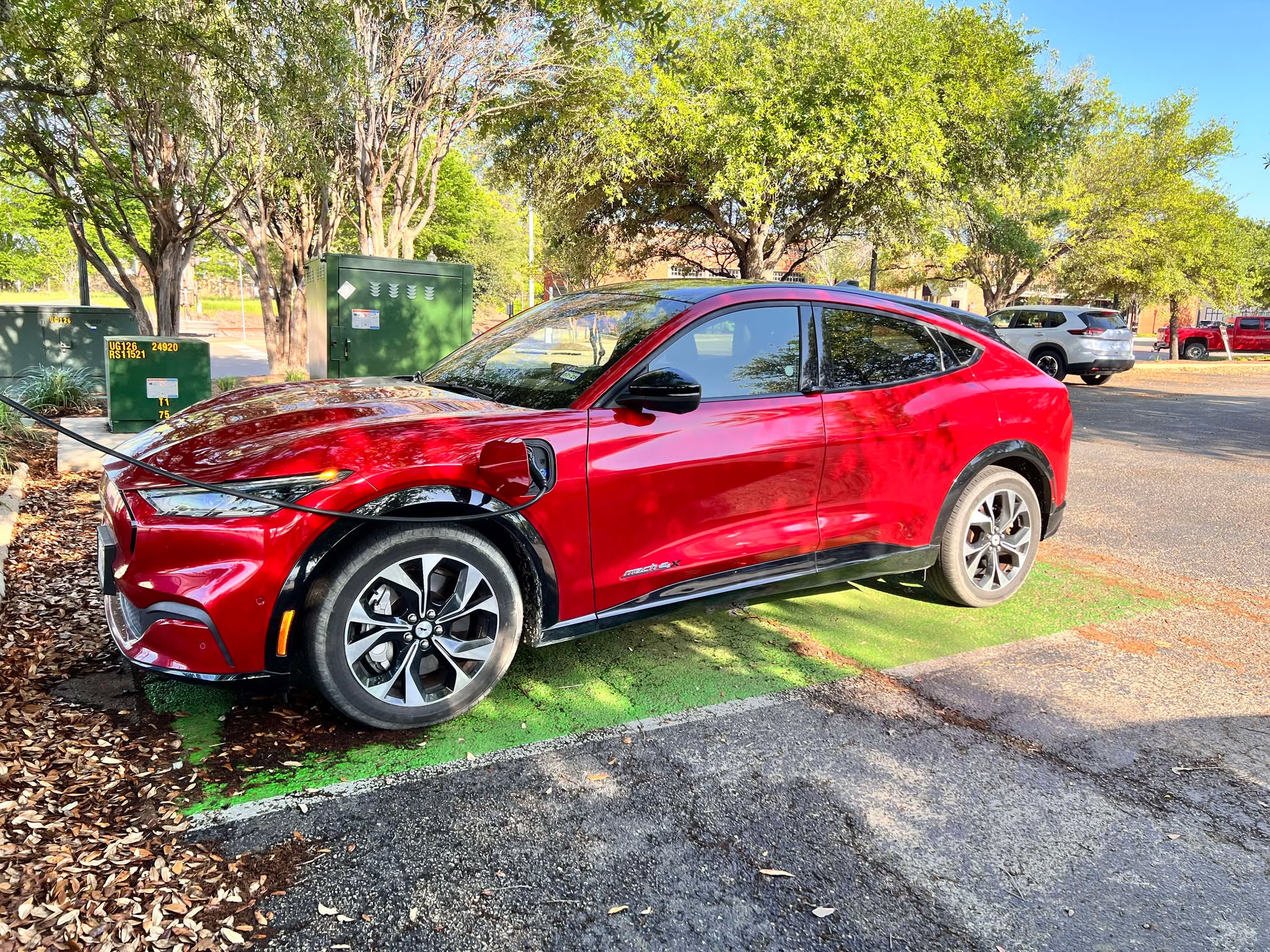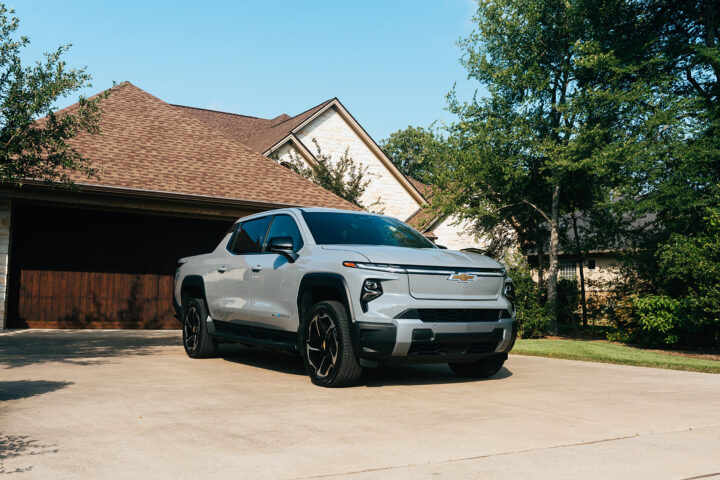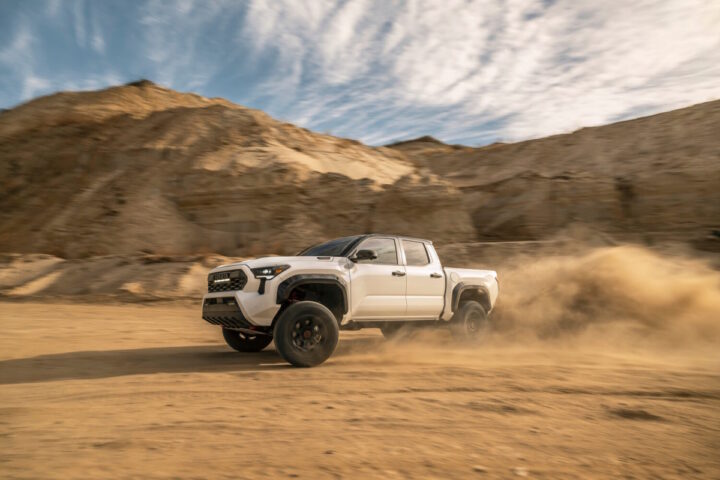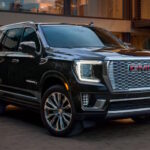Calling this an SUV—a Mustang, no less —feels like heresy. The Mach-E wasn’t just Ford’s first high-volume electric vehicle; it was a statement. One that split the enthusiast world down the middle. But now, as we glide into the 2025 model year, the Mustang Mach-E feels like it might have found its place. However, it is still not a Mustang. Maybe calling it the Edge-E would have been a better move. But this is the first time I have had a chance to drive the Mach E because Ford doesn’t send us any test vehicles. This drive happened accidentally when I got assigned this base trim model at the airport.
From what I have read, compared to the early models, for 2025, Ford tightens up its electric performance crossover with meaningful upgrades: a more intuitive cabin, smarter driver-assist tech, and pricing that makes Tesla sweat. With a range of trims stretching from commuter-friendly to borderline absurd in the best way possible, the Mach-E is no longer out to prove itself—it’s out to dominate.
Being a base model, we don’t get the dual motors, Brimbo Brakes, and MagneRide Dampners, so, needless to say, it is soulless and not worthy of the Mustang badge. Having owned nearly every version of a Mustang from 1964.5 through the early 2000s, even a four-cylinder Fox body had some Mustang spirit, the Mach E could be any electric SUV; in fact, when I visited my dad, he asked, “How do you like that new Hyundai?”
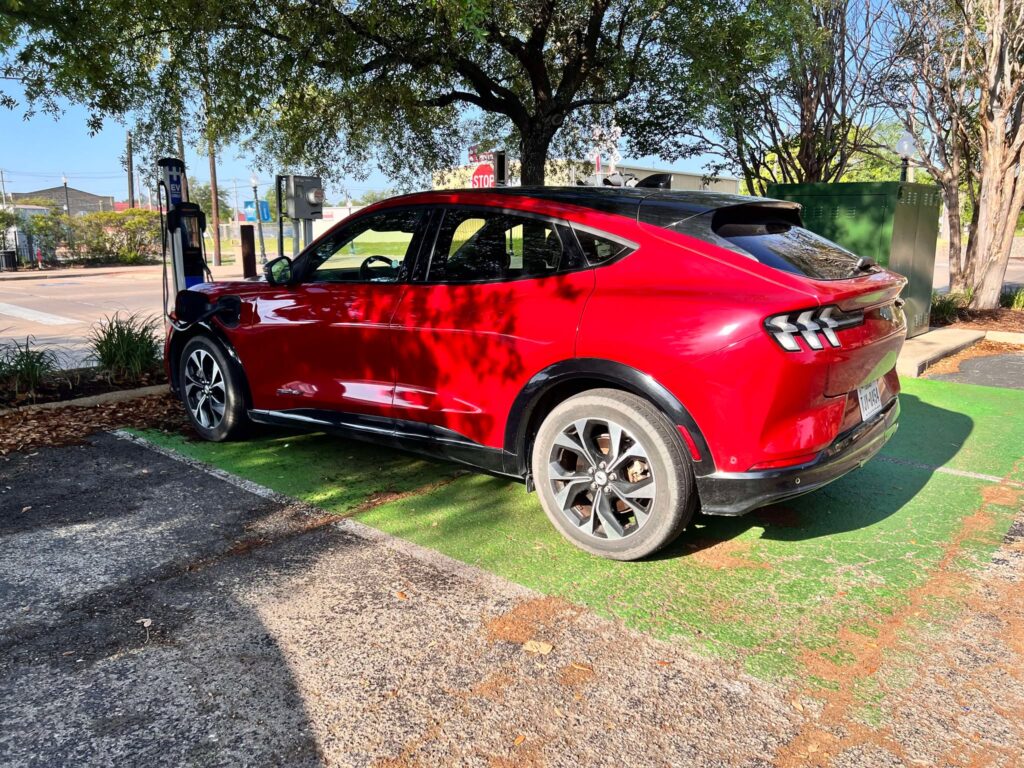
So you want to buy a Mustang Mach-E?
Three powertrain options cater to very different kinds of drivers. The entry-level Select model starts at $36,495 and delivers up to 250 miles of EPA-estimated range through a single-motor, rear-wheel-drive layout. It’s not fast, but it’s composed and confident—an ideal gateway into EV life. The Premium trim adds all-wheel drive as an option and stretches the range to 320 miles when paired with the extended-range battery. This is where things start to get interesting, especially with ventilated seats, red accent stitching, and the quiet luxury of a redesigned console and shifter that no longer eats into knee room.
And then there’s the GT. With dual motors, all-wheel drive, and 480 horsepower on tap, it flings the 5-door pony from 0 to 60 in under four seconds. It’s still silent, of course, but there’s a strange satisfaction in launching something this big and this heavy with such unrelenting urgency. You’ll sacrifice some range—EPA estimates come in at around 280 miles—but it’s worth every lost mile for the experience alone.
Inside, Ford has continued refining what was already a tech-forward cabin. A 15.5-inch vertical touchscreen still dominates the dashboard, running the latest SYNC 4 software with over-the-air updates and support for wireless Apple CarPlay and Android Auto. It’s snappy and intuitive, though it still feels like Ford is figuring out exactly how much to digitize. Thankfully, key controls like volume and climate remain physical or logically placed, avoiding some of the pitfalls found in other EVs that go full minimalist.
The big leap for 2025, though, is the new BlueCruise 1.5 system. Available on most trims, it’s Ford’s hands-free highway driving system and now includes automatic lane changes. In practice, it’s surprisingly confident—especially on well-marked highways—and feels more human than its competitors. There’s still the occasional hiccup, but for long hauls across I-10 or navigating traffic around Houston or Dallas, it’s a welcome companion.
Charging times remain competitive. Ford claims a 10 to 80 percent fill-up in about 36 minutes on a DC fast charger, which holds up in our testing. Home charging with the Ford Connected Charge Station is also simple and efficient, though not as quick as 800-volt systems from competitors like Hyundai or Porsche.
Where the Mach-E really separates itself is value. Even with inflation and material costs going up, Ford has managed to keep the Mach-E’s price in check. With the Premium trim starting under $42,000 and the high-performance GT coming in at just over $52,000, it undercuts most of its rivals—especially once federal and state EV incentives are factored in.
So, is it really a Mustang? Depends on who you ask. If you’re a traditionalist who thinks Mustangs should only come with a V8 and a rear axle built for smoking tires, probably not. But if you have zero idea of what a Mustang has always been… Sure, why not? Even Shelby only sold the Mach-E project they did in Europe only. They know American Mustang fans are not their audience.
In the end, this electric pony isn’t here to replace the Mustang—it’s here to reimagine it. And with its blend of performance, design, tech, and price, the 2025 Mach-E has evolved beyond its controversial beginnings into something far more compelling: an electric SUV with soul.

